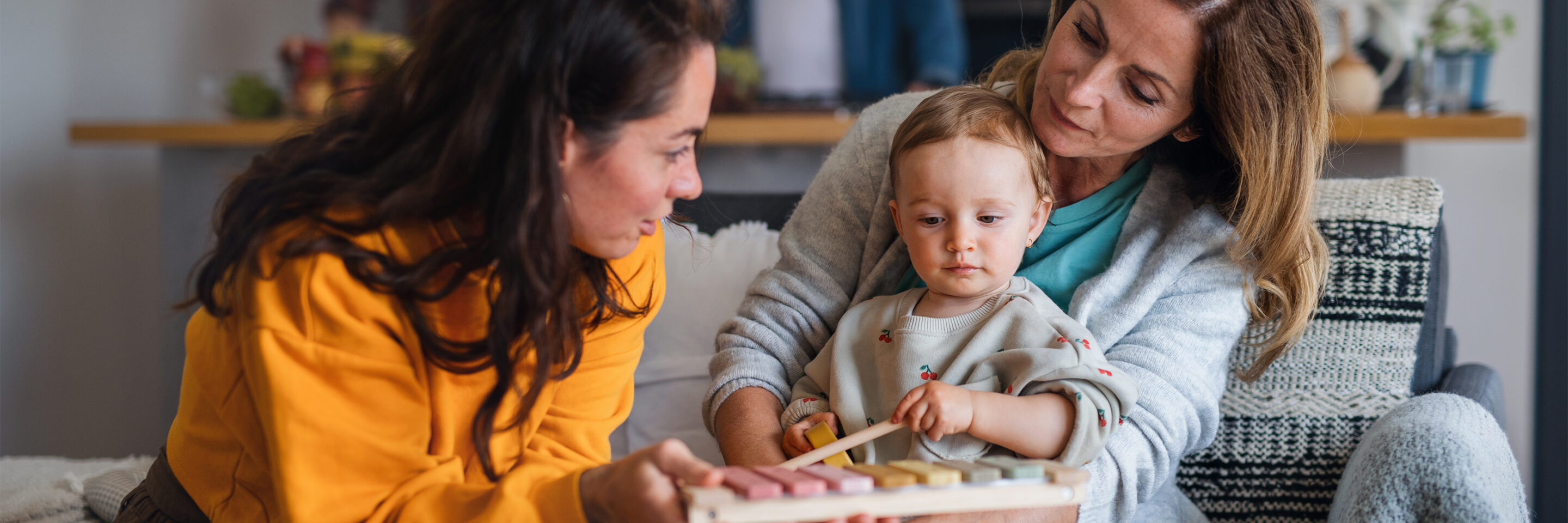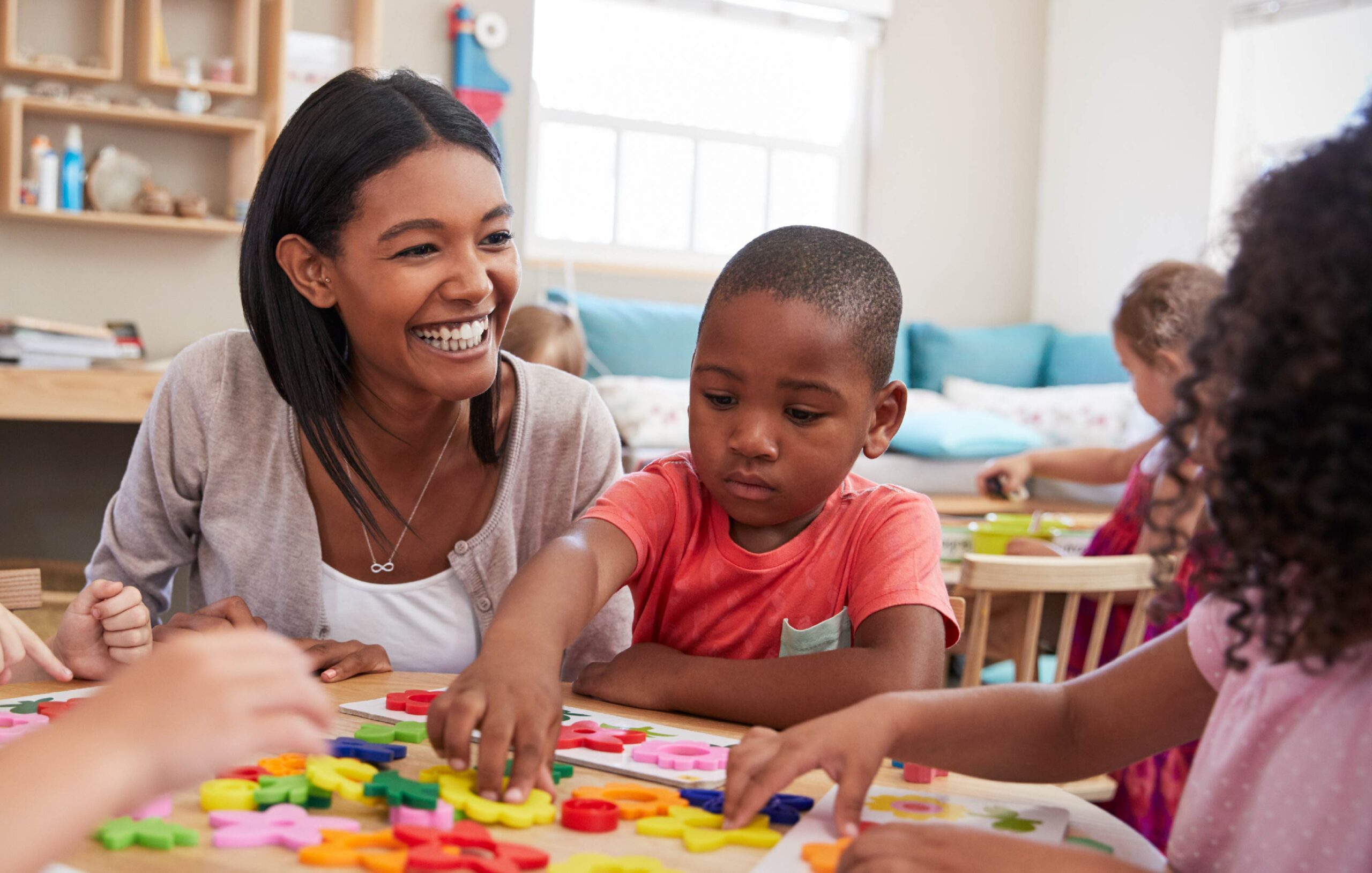4 Steps to Using the AEPS-3 Test Collaboratively
PublishedIn early childhood programs that serve children who have or are at risk for delays or disabilities, collaboration among team members brings greater depth to assessment information—and helps with identifying outcomes and developing quality goals and objectives for intervention. This post outlines how teams of early childhood professionals (and importantly, families) can use the AEPS-3 Test collaboratively.
There are several advantages to having team members complete a single curriculum-based assessment like the AEPS-3 Test:
- It eliminates the redundancies and inconsistencies that can occur when professionals complete separate assessments.
- It encourages ongoing team collaboration during teaching/intervention and progress monitoring activities.
- Families are better able to actively participate in the assessment process when all team members use the AEPS-3 Test as a reference point to gather, record, and discuss assessment data.
- Professionals build knowledge across their areas of expertise by engaging in cross-disciplinary discussions.
Though AEPS-3 accommodates different team compositions and approaches, all teams should organize themselves around four basic team assessment steps when using the AEPS-3 Test collaboratively. Here’s a quick introduction to each of these four steps:
Step 1: Hold a pre-assessment planning meeting.
Have a team planning meeting before administering the AEPS-3 Test. This meeting allows team members to discuss and decide who will be responsible for observing each area. Although team members may be assigned to conduct the assessment in their area of expertise, they should have a shared collaborative philosophy that they will gather all pertinent information they observe—for example, the communication specialist will note a behavior concern to inform the team discussion.
At this meeting, team members should also discuss where to observe the child and when the team is likely to see the skills in each area. If the child is in a child care setting, the teacher should share the daily schedule and any activities that may naturally elicit behaviors the team members want to observe. If the assessment is in a home, family members can share information about the typical home schedule. Knowing children’s daily activities allows professionals to schedule appropriate, productive times to observe in classroom or home. For a center-based program, the team might ask the teacher to arrange a series of assessment activities at times when the team is available to systematically observe and score the AEPS-3 Test.
Step 2: Assign team assessment responsibilities.
Team members should discuss their responsibilities related to assessment decisions. For example, the teacher may be responsible for making available specific snack items (such as those that encourage children to use their fingers or pour into a cup) on a particular day when the occupational therapist is scheduled to observe. Or the communication specialist may be responsible for running an assessment activity during circle time and providing opportunities for a child to demonstrate behaviors of interest while the classroom teacher records assessment data. In a home, the caregiver may engage the child in a specific activity while the home visitor observes.
Step 3: Record assessment observations.
Follow through on plans made in Steps 1 and 2. Using the AEPS-3 Child Observation Data Form (CODF), team members record a child’s skills and behaviors during planned, child-initiated, and routine activities that occur in familiar settings. If children do not perform all the behaviors during these activities, team members may need to return to the setting or activity at another time, try another setting or activity, plan to use direct test procedures, or seek parent report.
Unless the caregiver is unwilling or unable to do so, they should complete an AEPS-3 Family Report and/or Family Assessment of Child Skills (FACS) for their child. This will help the family understand the child’s developmental status and contribute to assessment outcomes, and it will help the team develop teaching plans and IFSP/IEP content that matches the family’s values and needs.
Step 4: Hold a post-assessment meeting.
Shortly after observations are complete, all the team members—including caregivers—should convene to discuss their observations. The team discusses the results noted in the Family Report and/or FACS and CODF to compile a single, comprehensive, cross-disciplinary assessment. Team members should also organize and prioritize the results for the IFSP/IEP meeting by checking the appropriate boxes next to target items on the CODF. Caregivers can indicate their priorities narratively on the Family Report.
***
Following these steps will help teams work collaboratively to collect accurate information and develop IFSPs and IEPs that are appropriate for the child and consistent with family desires and values. To implement these steps effectively, the team should receive sufficient administrative support as they develop and maintain their collaborative efforts. The whole team should also work on positive joint communication and use effective strategies for solving conflicts and making decisions. For more on using AEPS-3 to support collaboration and a team approach, see Chapter 5 of the AEPS-3 User’s Guide.
This post was adapted from Bricker, D., & Johnson, J. J. (Eds.). (2022). AEPS®-3 Volume 1: User’s guide. In D. Bricker, C. Dionne, J. Grisham, J. J. Johnson, M. Macy, K. Slentz, & M. Waddell, Assessment, Evaluation, and Programming System for Infants and Children, Third Edition (AEPS®-3). Brookes Publishing Co.



